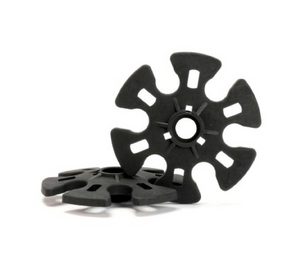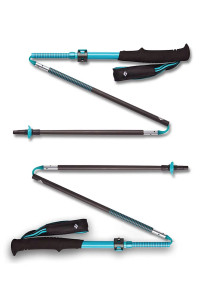
Aonijie - Entry Level Fixed Length Pole
Helinox - Alloy poles ranging from entry level to Premium Fixed length and Adjustable
KV+ Ibex QCD - 80% Carbon Pole fixed length poles, available in Australia exclusively at Tribe&Trail
Black Diamond - 100% Carbon Poles in fixed Length and Adjustable, available in men's and women's
Leki - Premium Carbon fixed length Pole

Buy The Best Hiking Poles and Trekking Poles in Australia
Hiking poles and trekking poles are terms often used interchangeably to refer to the same type of equipment. They are supportive tools used by hikers and trekkers to provide stability, balance, and reduce strain on the legs and joints while traversing various terrains.
The primary purpose of hiking or trekking poles is to enhance stability and balance during hikes or treks. They provide additional points of contact with the ground, improving stability on uneven surfaces, slippery terrain, or steep inclines and declines. Hiking poles also help distribute the weight and impact, reducing stress on the knees, ankles, and hips.
Additionally, hiking or trekking poles can assist with maintaining an upright posture, reducing fatigue, and increasing endurance. They can provide leverage during ascents, aid in balance during descents, and offer support when crossing streams or navigating tricky sections of the trail.
How do Hiking Poles Help You in Your Trail Runs?
Hiking poles not only reduce stress but also lower the force of impact on your joints by at least 30%. This helps you to hike for a longer duration, especially if you are someone who goes on a hike regularly. Trekking poles also increase your performance speed by using your arms to propel you forward. Think of it like an elliptical, when you allow your arms to do some of the work your stride is easier to maintain by staying consistent, and you get more of a full-body workout.
The best hiking poles have some external benefits as well. These hiking poles can be used as tent poles. Outside of the bodily factors, hiking poles have substantial external benefits as well. They can give you a considerable amount of additional traction on slippery surfaces like mud, snow, or loose rocks and help you maintain balance while trudging through a river crossing.
Some can even be used as a stronger alternative to tent poles, which means you could reduce your overall pack weight and increase the stability of your shelter. Further, even though you may not want to think of it, the hiking poles can be used as a great defense against aggressive wildlife if you happen to find yourself in that awful position.
Trekking Poles vs Trail Running Poles - What's the difference?
You can use trekking poles for trail running because all hiking and running poles serve the same purpose. The primary distinction between trekking poles and running poles is the weight and length.
Trail running poles are designed to be lightweight, collapsible, and often made from materials like carbon fiber or lightweight aluminum to minimize weight while maximizing durability. They are shorter in length compared to traditional hiking poles and have features such as wrist straps and ergonomic handles to provide a secure grip while running.
The primary purpose of trail running poles is to aid in balance, especially during ascents and descents. They can provide extra support and stability, particularly on steep or uneven terrain, reducing the risk of falls or injuries. The poles are typically used to push off the ground, similar to hiking poles, helping runners maintain forward momentum and navigate challenging sections of the trail.
Some trail running poles may have features like ergonomic handles, wrist straps, or grip extensions to enhance comfort and control during the run. Trail running poles are mainly used by ultra-distance runners, technical trails, or those participating in mountain trail races where the terrain is particularly challenging due to significant elevation changes.
Trail running poles are mainly used by ultra-distance runners or those participating in mountain trail races where the terrain is particularly challenging. In most trail running scenarios, though, poles are not a common accessory.
Foldable trekking poles
Foldable trekking poles, also known as collapsible hiking poles, offer the convenience of easy storage and transport. These poles feature a folding mechanism that allows them to collapse into a compact size, making them ideal for hikers and travelers who have limited space. Despite their foldable design, they maintain durability and reliability through the use of lightweight yet sturdy materials like aluminum or carbon fiber. Foldable hiking poles often have adjustable lengths, ensuring a customized fit for different users and terrains. While they may have slightly less rigidity compared to traditional telescopic poles, advancements in design and materials have greatly improved their strength and stability. Foldable hiking poles provide versatility and can be used for various outdoor activities beyond hiking. When choosing foldable hiking poles, consider factors such as material, adjustability, grip comfort, locking mechanism, and overall durability to find the right pair for your needs.
How to Use The Hiking Poles
Using hiking poles effectively involves a few key steps. Here's a general guide on how to use hiking poles:
Adjust the length
Most hiking poles are adjustable, allowing you to modify their length according to your height and the terrain. To determine the appropriate length, stand with the pole in your hand and position your elbow at a 90-degree angle. Adjust the pole length until your forearm is parallel to the ground.
Grip the poles correctly
Hold the trekking poles with a firm but relaxed grip. The straps should go through your hand from the bottom and then wrap around your wrist, allowing you to relax your grip while still maintaining control. This way, you won't have to exert excessive force to hold the poles.
Start walking with a natural rhythm
As you walk, let the hiking poles fall naturally by your side. Swing your arms naturally and plant the trekking poles slightly behind you as your opposite foot steps forward. This rhythmic motion will help you maintain balance and stability.
Engage the poles with each step
As you plant your foot, push the pole into the ground diagonally, roughly parallel to your body. Apply downward pressure on the running poles to help propel yourself forward. This technique provides added stability, reduces impact on your knees, and distributes the workload across your upper body.
Adapt to the terrain
Adjust your hiking pole to suit the terrain. For uphill sections, shorten the trekking poles slightly and use them to push off the ground, helping you ascend. On downhill slopes, lengthen the poles and plant them ahead of you to provide support and reduce strain on your knees.
Crossing obstacles
When encountering obstacles like streams or fallen logs, you can either tuck the trekking poles under your arms or use them to assist with balance while stepping over. Adjust your grip or strap usage accordingly to ensure a secure hold.
Remember, it may take some practice to develop a comfortable and efficient technique with hiking poles. Adjust the technique to suit your individual preferences and the specific trail conditions. Over time, using hiking poles can greatly enhance your stability, reduce fatigue, and make your hiking experience more enjoyable.
How to Buy the Best Hiking Poles and Trekking Pole in Australia?
Hiking poles is one of the most important and a popular trail running gear because of their multi-purpose use. During old times the hiking poles were only used by older hikers, but today almost every hiker or trail runner uses hiking poles. They can be used at tent poles and also help you improve your stride. On uneven tracks or snow, these poles protect you from falling. It is on you to decide which hiking poles work best for you. You can choose from the collection of the best hiking poles in Australia at Tribe&Trail.
Important Features to Look at When Buying Hiking Poles and Trekking Poles
When buying hiking poles, there are several factors you should consider to ensure you make the right choice for your needs. Here are some key factors to consider:
Material
Hiking poles are commonly made from aluminum or carbon fiber. Aluminum poles are more affordable and durable, while carbon fiber poles are lighter and offer better shock absorption. Consider your budget and the desired balance between weight and durability.
Adjustability
This should be an important feature to consider while choosing the hiking poles, unless you know you will primarily be using them on flat surfaces. The adjustability range of hiking poles is generally 24 to 55 inches. This is not only great for setting the correct pole length for your height but also for adjusting the pole for the terrain. You should maintain a 90-degree bend at the elbow for maximum support and comfort. You can also choose the best foldable hiking poles in australia and Tribe&Trial/
Look for poles with adjustable lengths. This allows you to customize the pole height to suit different terrains and your personal preference. Telescopic or flip-lock mechanisms are common types of adjustability systems.
Grip
The hiking pole grip should be comfortable and ergonomic. Common grip materials include foam, cork, or rubber. Foam grips offer good moisture absorption, while cork grips provide natural warmth and comfort. Rubber grips are more durable and suitable for wet conditions.
Wrist Straps
Consider the type of wrist straps provided. Look for adjustable, padded wrist straps that allow you to secure your grip on the trekking poles without causing discomfort or chafing.
Locking Mechanism
The locking mechanism is crucial for keeping the poles securely extended at the desired length. Common types include twist locks, lever locks, and push-button locks. Choose a reliable locking mechanism that is easy to use and maintains stability.
Weight
The weight of the trail unning poles can affect your overall comfort during long hikes. Lighter poles are generally preferred for reduced fatigue, especially for longer or multi-day trips. However, keep in mind that lighter poles may sacrifice some durability.
Shock Absorption
For that little extra support, some hiking poles feature built-in shock absorption systems that help reduce the impact on your joints and muscles. This can be beneficial if you frequently hike on rough or rocky terrains. These springs absorb a lot of force while going downhill. One great thing about these kinds of trail running poles is that the mechanism can be turned on and off.
Price
Set a budget and consider the cost of the hiking poles relative to the features and quality you desire. Remember that investing in a higher-quality pair of poles can offer better performance and durability in the long run.
Reviews and Recommendations
Before making a purchase, read reviews from trusted sources, seek recommendations from experienced hikers, and consider the reputation of the brand or manufacturer.












